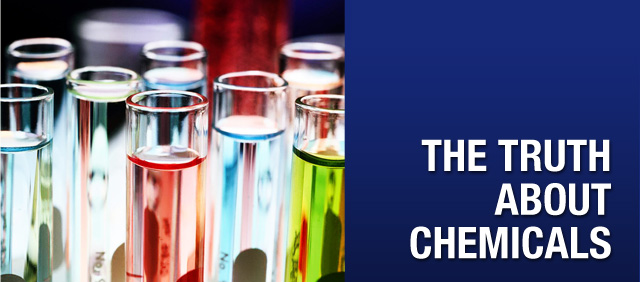We see a lot of products with long, chemical-sounding names, but the companies that manufacture them often tell us they are completely natural and chemical-free. What’s going on here?
What is a chemical? It is simply two or more atoms joined together. Chemicals give structure to the world, composing the architecture the makes up every aspect of the universe. If atoms didn’t join to form chemicals, the world—the universe—would not exist, and neither would humans. Chemicals form the nutrients that build the human body, structure the oceans that cover most of Earth, shape the plants that grow from the ground and compose the air you breathe.
Because virtually everything than can be seen or touched is comprised of chemicals, it shouldn’t come as a surprise that another word for cosmetic ingredient is “chemical.” Every ingredient in a cosmetic product is one. Not just emulsifiers, surfactants and preservatives, but vitamins, proteins and plant extracts—they all are chemicals.
Just because an ingredient has a long, unrecognizable, or difficult-to-pronounce name doesn’t mean it’s the only chemical in a sea of short, friendly sounding ingredients. Many that are naturally occurring, such as the primary soothing component in licorice—glycyrrhetinic acid—are long words that most trip over when trying to pronounce. Water, one of the shortest, most recognizable ingredients, is the most commonly used chemical in cosmetics. Don’t rely on an ingredient’s length, identifiable nature or the difficulty in pronunciation as the key tip-offs that it is a chemical.
The bottom line is this: an ingredient is not natural or chemical. Natural refers to the ingredient’s source and chemical refers to its structure. Natural ingredients are chemicals, too. If a company were to sell you a truly chemical-free product, the container would not only be empty, it would be free of air, as well, because that is composed of chemicals, too.
A.W. LAKE products are free from petrochemicals, sulfate based detergents, propylene glycol, polyethylene glycol, formaldehyde, parabens, synthetic colorants and artificial fragrances.


Leave A Comment